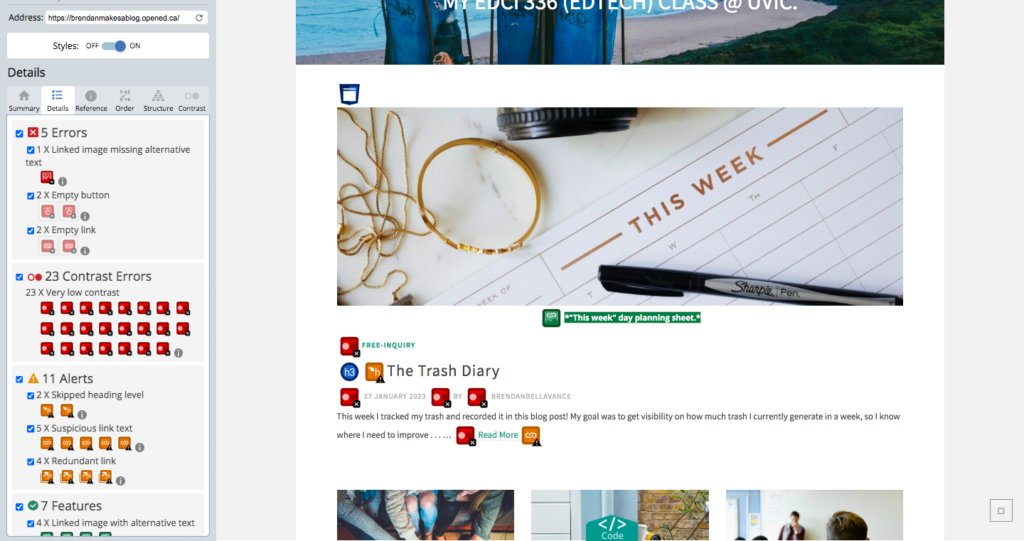This week, we are talking about accessibility in my EDCI 336 class. Technology should reduce barriers and level the playing field for all learners. But, in many cases, technology may accidentally create barriers. This is why it is crucial that we as teachers vet online resources, to ensure that they have closed captions, alt text, good contrast, and other factors that will make them useful for all learners.
The Accessible Video
The first thing that I worked on was to make my instruction Google Doc video from my last Weekly Reflection Blog more accessible by adding closed captions. I decided to re-upload it via YouTube instead of embed it within WordPress itself, to be able to edit the subtitles better. Using YouTube’s automated generated, it actually took me very little time to do this! All I need to do was correct a few words and make the syntax into sentences rather than just an AI’s stream of consciousness.
The Accessible Blog
Our professor had us run our blog’s (yeah, this blog!), through an accessibility website analyzer. While some of its recommendations I couldn’t quite finish because of factors due to the theme I chose in WordPress, I was able to get some really great recommendations surrounding alt text for images, the use of headers, and double-checking the functionality of all of my links. I did my best to update as many of these as possible (you can see the recommendations below) and then tried to ensure that this screenshot is uploaded with image accessibility protocols.

Thoughts on Accessibility
It is obvious that accessibility is crucial for learners and it is intuitive that view UDL (Universal Design for Learning) says that things that help one student will likely help the whole class. I think that it is easy to miss things like subtitles, alt text, and contrast issues unless you are actively affected by them. Because people who have no unique needs can interact with technology in its unedited form, it isn’t always obvious what is needed to make things work for everyone. That’s why it is important to know your learners, ask questions, and keep notes on who would be helped by what. Unless you keep it top of mind, it may be easy to forget or not even consider.
I think that one of the major reasons that accessibility features are lacking is because it may be time consuming to setup. Whether it be finding the funding for a new EdTech as schools or typing in proper closed captions to your videos, there is an up front time cost needed to make things accessible from the jump. What I will say, is that investing that time in the beginning will likely save time down the road. For example, if we ensure that we choose videos with closed captions when lesson planning, we can avoid needing to figure out what to do in the moment if sound quality is poor or a learner needs them to fully engage with the video.